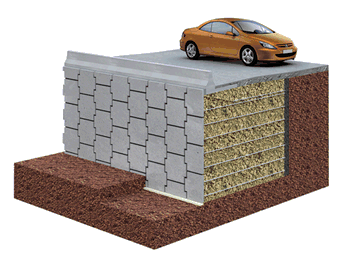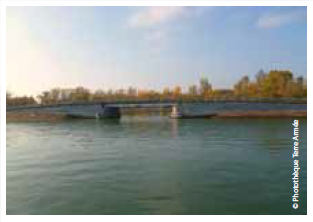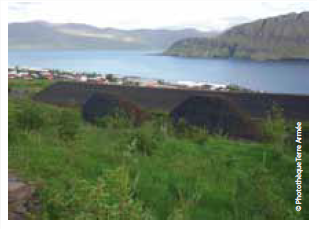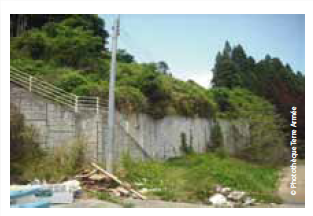

On a beach in 1957, Henri Vidal, the French inventor of Reinforced Earth, noticed that when he walked on a pile of sand the grains subsided and slid in all directions. But when he made a small pile of sand and inserted rows of pine needles into it, the sand remained stable even when he walked on it. He then used this idea to develop a new technique for constructing retaining walls.

When you walk on sand, the beans collapse and slide in all directions.

If you make a small pile of sand and insert rows of pine needles, the whole remains stable when you walk on it.
A retaining wall holds back a higher level of earth behind it. Evolving techniques have considerably reduced the size of the wall necessary.
Gravity retaining wall : the earth is retained merely by the wall’s weight.
Cantilever wall: the weight of the earth resting on the wall’s wide cantilever base prevents the wall from being pushed outwards (rotation failure).
Reinforced earth wall : the earth, reinforced with armatures, ensures its own stability

More than 50 million square metres of Reinforced Earth wall have been built all over the world since the procedure was invented. The technique has been constantly improved to adapt to different types of retention and terrain. Reinforced Earth now has all kinds of applications, in road, rail and hydraulic constructions and on industrial sites. Reinforced Earth structures are capable of withstanding loads as heavy as a passing high speed train. Its flexibility as a material also enables it to resist to earthquakes, hence its popularity in countries such as Japan.


Reinforced Earth is a composite structure, formed by the combination of earth and flat, metallic or synthetic armatures laid horizontally at regular intervals. The Reinforced Earth mass is faced with modular precast concrete panels. Facings provide erosion protection but do not ensure stability. The stability is ensured by friction between armatures and surrounding soil. This technology is a very innovative concept since the soil contributes to its own stability



